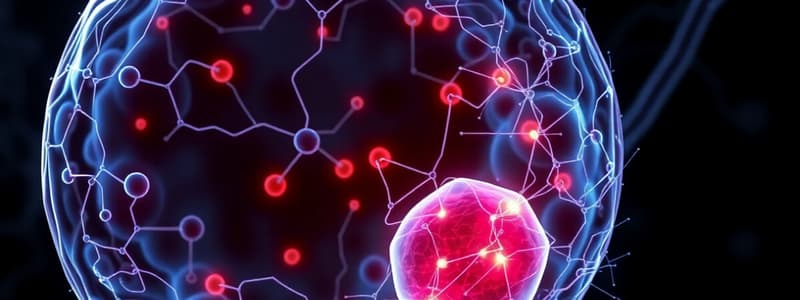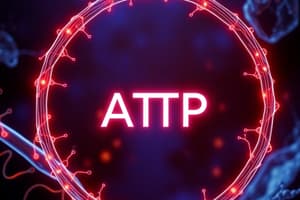Podcast
Questions and Answers
What is the primary function of ATP in cells?
What is the primary function of ATP in cells?
- To store genetic information
- To serve as a primary energy currency (correct)
- To facilitate enzyme activity
- To transport molecules across membranes
Which step of cellular respiration directly produces carbon dioxide?
Which step of cellular respiration directly produces carbon dioxide?
- Electron transport chain
- Glycolysis
- Krebs/Citric Acid Cycle (correct)
- Acetyl CoA Conversion
How much ATP is produced from one molecule of glucose during cellular respiration?
How much ATP is produced from one molecule of glucose during cellular respiration?
- Net gain of 36 ATP
- Net gain of 30 ATP (correct)
- Net gain of 28 ATP
- Net gain of 2 ATP
What is the role of electron carriers like NADH and FADH2 in cellular respiration?
What is the role of electron carriers like NADH and FADH2 in cellular respiration?
During glycolysis, how are the 6 carbon molecules of glucose converted?
During glycolysis, how are the 6 carbon molecules of glucose converted?
Flashcards
Cellular Respiration
Cellular Respiration
The process by which cells break down glucose to release energy in the form of ATP.
Glycolysis
Glycolysis
The process by which glucose is split into two pyruvate molecules, generating a small amount of ATP and NADH.
Acetyl CoA Conversion
Acetyl CoA Conversion
The process by which pyruvate is converted into Acetyl CoA, a molecule that enters the Krebs cycle.
Krebs/Citric Acid Cycle
Krebs/Citric Acid Cycle
Signup and view all the flashcards
Electron Transport Chain
Electron Transport Chain
Signup and view all the flashcards


